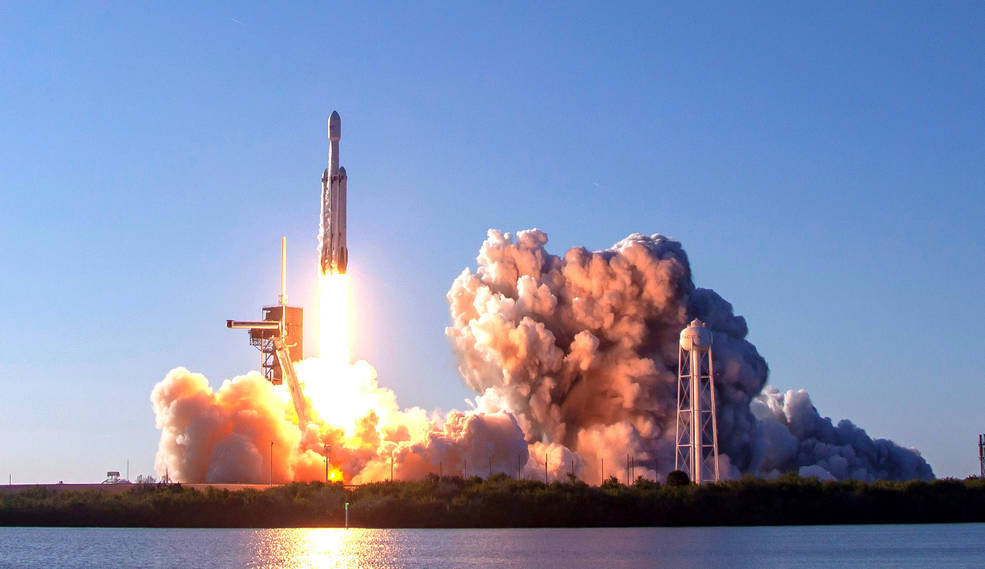
Los Angeles: NASA announced it would send an atomic clock into orbit late June as part of plans to improve deep space navigation and potentially allow spacecraft to guide themselves . The Deep Space Atomic Clock, a toaster-sized device, has been described as the first GPS-like instrument capable of flying on a spacecraft according to the US space agency. The clock is set to be launched on a SpaceX Falcon Heavy rocket and will orbit the earth for one year where its navigational abilities will be put to the test. NASA stated that should Deep Space Atomic Clock's trial year in space go well, it could pave the way for a future of one-way navigation in which astronauts are guided by a GPS-like system across the surface of the Moon or can safely fly their own missions to Mars and beyond. "Every spacecraft exploring deep space is steered by navigators here on Earth. Deep Space Atomic Clock will change enabling onboard autonomous navigation, or self-driving spacecraft," said Jill Seubert, the deputy principal investigator. The device would allow NASA navigators to safely and autonomously fly themselves to destinations like the Moon and Mars. Today, navigators tell a spacecraft where to go by calculating its position from Earth and sending location data to space in a two-way relay system that can take anywhere from minutes to hours to deliver directions. This method means that no matter how far a missions travels through the solar system, spacecraft remain tethered to the earth as it awaits commands and directions. The atomic clock could change that by finally allowing space navigators to safely and autonomously fly themselves to destinations like the Moon and Mars. Currently, spacecraft flying beyond Earth's orbit do not have a GPS to find their way through space. Atomic clocks on GPS satellites aren't accurate enough to send directions to spacecraft, when being off by even less than a second could mean missing a planet by miles. Instead, navigators use giant antennas on Earth to send a signal to the spacecraft, which bounces it back to Earth. Extremely precise clocks on the ground measure how long it takes the signal to make this two-way journey. The amount of time tells them how far away the spacecraft is and how fast it's going. Only then can navigators send directions to the spacecraft, telling it where to go. "It's the same exact concept as an echo," said Seubert. "If I'm standing in front of a mountain and I shout, the longer it takes for the echo to come back to me, the farther away the mountain is." According to NASA, two-way navigation means that no matter how deep into space a mission goes, it still has to wait for a signal carrying commands to cross the vast distances between planets.The process was made famous by Mars landings like Curiosity, when the world waited 14 long minutes with mission control for the rover to send the message that it landed safely. That delay, however, is an average wait time: depending on where Earth and Mars are in their orbits, it can take anywhere from 4 to 20 minutes for a one-way signal to travel between planets, the space agency added. The process is regarded as slow and laborious for those navigating deep space. During exchanges, a spacecraft flying at tens of thousands of miles per hour could be in an entirely different place by the time it "knows" where it is. Having the clock onboard would enable "radio navigation and, when combined with optical navigation, make for a more accurate and safe way for astronauts to be able to navigate themselves," said Deep Space Atomic Clock Principal Investigator Todd Ely. "The Deep Space Atomic Clock will have the ability to aid in navigation, not just locally but in other planets as well. One way to think of it is as if we had GPS at other planets," said Eric Burt, the ion clock development lead at NASA's Jet Propulsion Laboratory (JPL). Burt and fellow JPL clock physicists Robert Tjoelker and John Prestage created a mercury ion clock. In lab tests, the Deep Space Atomic Clock proved to be 50 times more accurate than GPS clocks. That's an error of 1 second every 10 million years. The clock's time in space will determine whether it can remain stable in orbit. If it does, a Deep Space Atomic Clock could fly on a mission as early as the 2030s, the first step toward self-driving spacecraft that could one day carry humans to other worlds. The Deep Space Atomic Clock is hosted on a spacecraft provided by General Atomics Electromagnetic Systems of Englewood, Colorado. It is sponsored by the Technology Demonstration Missions program within NASA's Space Technology Mission Directorate and the Space Communications and Navigations program within NASA's Human Exploration and Operations Mission Directorate. JPL manages the project.
An atomic clock small enough to fly on a mission but precise enough to give accurate directions could make the two-way system obsolete. Future navigators would send a signal from Earth to a spacecraft. Like its Earthly cousins, the Deep Space Atomic Clock onboard would measure the amount of time it took that signal to reach it. The spacecraft could then calculate its own position and trajectory, essentially giving itself directions.
This one-way navigation has applications for Mars and beyond. Deep Space Network (DSN) antennas would be able to communicate with multiple missions at a time by broadcasting one signal into space. The new technology could improve the accuracy of GPS on Earth. Additionally, multiple spacecraft with Deep Space Atomic Clocks could orbit Mars, creating a GPS-like network that would give directions to robots and humans on the surface.